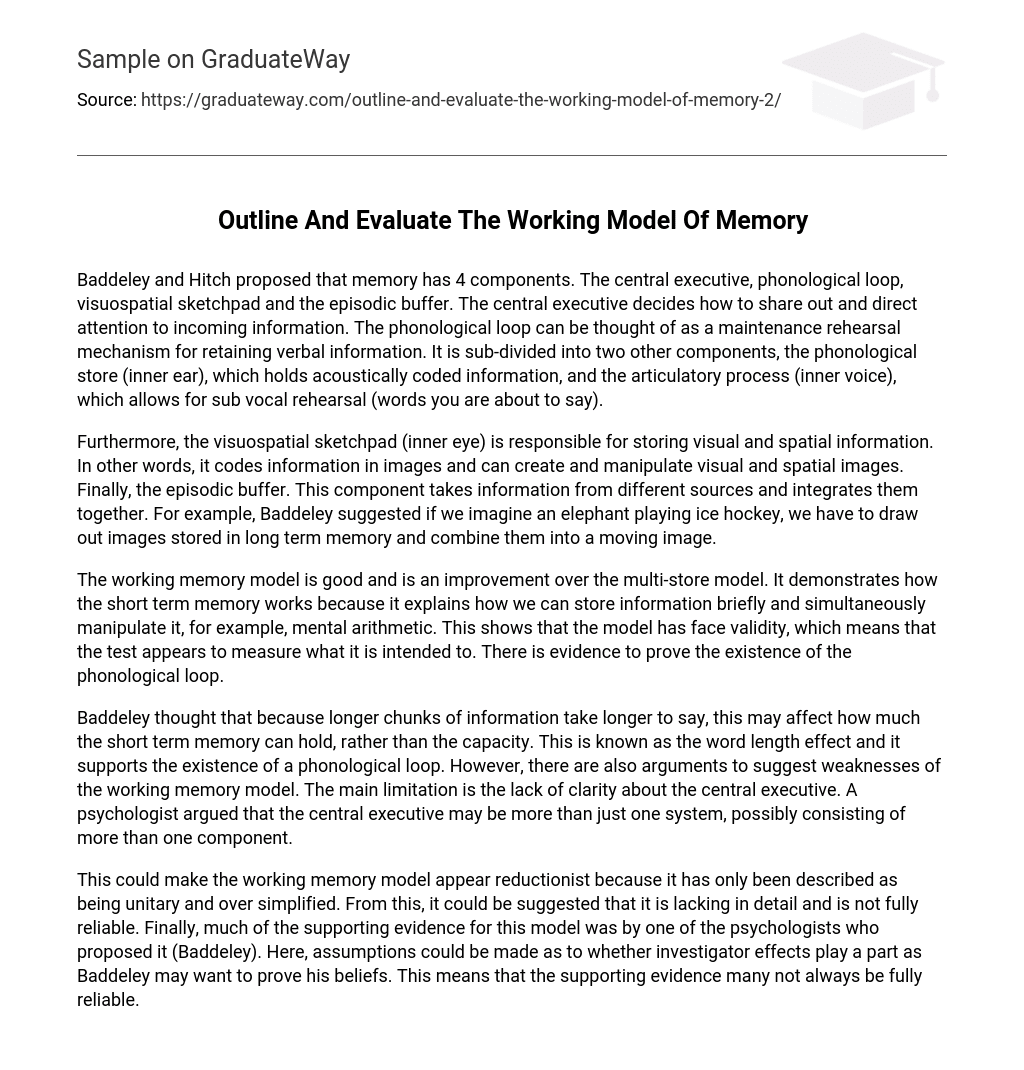According to Baddeley and Hitch, memory consists of four components: the central executive, the phonological loop, the visuospatial sketchpad, and the episodic buffer. The central executive is responsible for determining how to distribute and direct attention towards incoming information. The phonological loop functions as a mechanism for maintaining and rehearsing verbal information. It can be further divided into two components: the phonological store, also known as the inner ear, which holds acoustically coded information; and the articulatory process, also known as the inner voice, which enables subvocal rehearsal of words about to be spoken.
The visuospatial sketchpad, also known as the inner eye, is responsible for storing visual and spatial information. It encodes this information in pictures and can generate and manipulate visual and spatial images. There is also the episodic buffer, which retrieves information from various sources and integrates them. For example, according to Baddeley’s research, when we imagine an elephant playing ice hockey, we must retrieve images stored in long-term memory and combine them into a dynamic image.
The working memory model is an improvement over the multi-store model, providing insight into the functioning of short term memory. It demonstrates how we can store and manipulate information briefly, such as in mental arithmetic. This suggests that the model has face validity, accurately measuring its intended purpose. There is evidence supporting the existence of the phonological loop.
Baddeley proposed that the length of information chunks may impact the capacity of short-term memory, rather than the actual storage capacity. This phenomenon, termed the word length effect, provides evidence for the existence of a phonological loop. Nonetheless, there are counterarguments highlighting the limitations of the working memory model. The primary drawback lies in the insufficient understanding of the central executive. Some psychologists argue that the central executive might encompass multiple systems or components rather than being a singular entity.
This could imply that the working memory model may seem reductionist as it is only described as being unitary and oversimplified, potentially lacking in detail and full reliability. Additionally, most of the supporting evidence for this model comes from the psychologist who proposed it (Baddeley), allowing assumptions about possible investigator effects and a potential bias towards proving his own beliefs. Therefore, the supporting evidence may not always be completely reliable.





